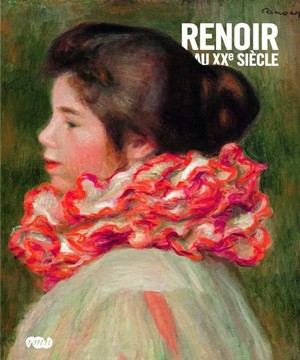A New and Fresh Look at an Old Master: Renoir au XXme Siecle
- SUBSCRIBE
- ALREADY SUBSCRIBED?
BECOME A BONJOUR PARIS MEMBER
Gain full access to our collection of over 5,000 articles and bring the City of Light into your life. Just 60 USD per year.
Find out why you should become a member here.
Sign in
Fill in your credentials below.
 “I’m beginning to know how to paint. It has taken me more than 50 years to get this far and I’m not done yet,” Pierre-Auguste Renoir declared in 1913, at the age of 72.
“I’m beginning to know how to paint. It has taken me more than 50 years to get this far and I’m not done yet,” Pierre-Auguste Renoir declared in 1913, at the age of 72.
Renoir continued to evolve as an artist and to create new work for another six years, until shortly before his death in 1919. In his later years he departed dramatically from the concerns of the Impressionist movement, returning to the studio and concentrating on figure studies, especially female nudes. He declared his interest in a classical and decorative style and created paintings influenced by Old Masters—Titian, Raphael, Rubens. And while his later work has often been overlooked or dismissed by twentieth century art critics and historians, he was greatly respected by younger contemporaries like Matisse, who declared “Les Baigneuses” (“The Bathers”) “the most beautiful nudes ever painted.”
This fall a new exhibition, “Renoir in the 20th Century,” organized by the Reunion des Musees Nationales, the Musee d’Orsay, and the Philadelphia Museum of Art, on display at the Grand Palais in Paris through January 4, explores Renoir’s later work and demonstrates his influence on major artists of the early modernist period—Picasso, Matisse, Bonnard among others—displaying their works along with his. It offers the public an extraordinary opportunity to better understand the artist the poet Apollinaire called “the greatest living painter.” “Renoir grows greater all the time,” he said. “His latest paintings are always the most beautiful. And the most youthful.”
After leaving Paris, the exhibition, which includes about 100 objects loaned by private and public collections from all over the world, will travel to the Los Angeles County Museum of Art (February 14-May 9) and from there to the Philadelphia Museum of Art (June 12-September 5, 2010).
Like all true artists, Renoir never stopped experimenting and testing new ground. And although toward the end of his life his hands were crippled by arthritis to the point that he needed assistance holding his brushes, he never stopped painting. (The arthritis eventually forced him to move from his beloved home in the village of Essoyes, in Champagne, to a more hospitable climate in the South of France.) During the last years of his life, despite his affliction, he also began working in a new medium, sculpture, collaborating with a gifted young artist, Richard Guino, who translated and transformed his images into a physically demanding medium that the master’s crippled hands could not manage. The current exhibition includes some of these sculptural works, a little-known aspect of Renoir’s oeuvre.
 A criticism often aimed at the works of Renoir is that they are “saccharine” or overly decorative. Renoir himself may have given ammunition to such criticism by some of his remarks. He was stubbornly old-fashioned, often dismissive of intellectuals, and adamant in expressing simplicity in his approach to art. “Why shouldn’t art be pretty?” he asked once, adding “There are enough unpleasant things in the world.” Another famously understated pronouncement was “My whim has been to put color on a canvas all my life,” to which he added, perhaps somewhat provocatively, “Really, I think this has never hurt anyone.”
A criticism often aimed at the works of Renoir is that they are “saccharine” or overly decorative. Renoir himself may have given ammunition to such criticism by some of his remarks. He was stubbornly old-fashioned, often dismissive of intellectuals, and adamant in expressing simplicity in his approach to art. “Why shouldn’t art be pretty?” he asked once, adding “There are enough unpleasant things in the world.” Another famously understated pronouncement was “My whim has been to put color on a canvas all my life,” to which he added, perhaps somewhat provocatively, “Really, I think this has never hurt anyone.”
Writing in the New York Times about the 2007 exhibition “Renoir Landscapes 1865-1883” (London/Ottawa/Philadelphia), Roberta Smith noted that “the familiar, beloved Renoir is only part of the story. This keeps his work unruly, vital and useful.”
The current exhibition represents another important step in developing a fuller and more accurate sense of the enormous influence Renoir had on both nineteenth and twentieth century artists—and the depth, complexity and richness his work has contributed to the history of art.
Please post your comments or questions and let them flow. Register HERE to do so if you need a user name and password.
More in Bonjour Paris, France, Museum, Paris, Paris art exhibits, Paris art museums, Paris artists, Paris exhibitions, Paris museums, Paris sightseeing, Paris tourism




